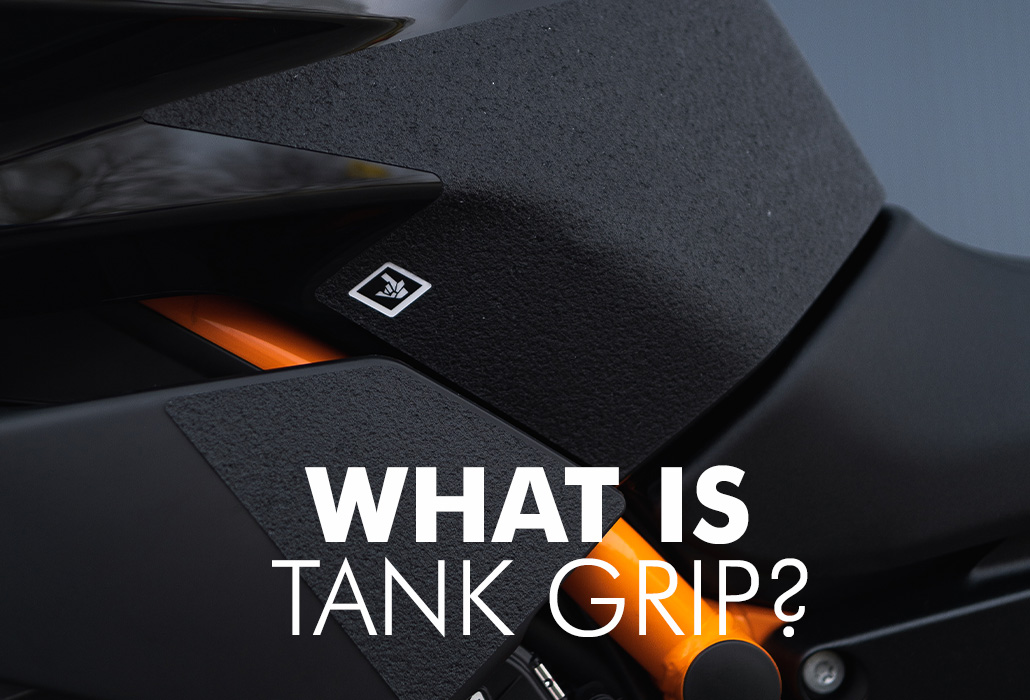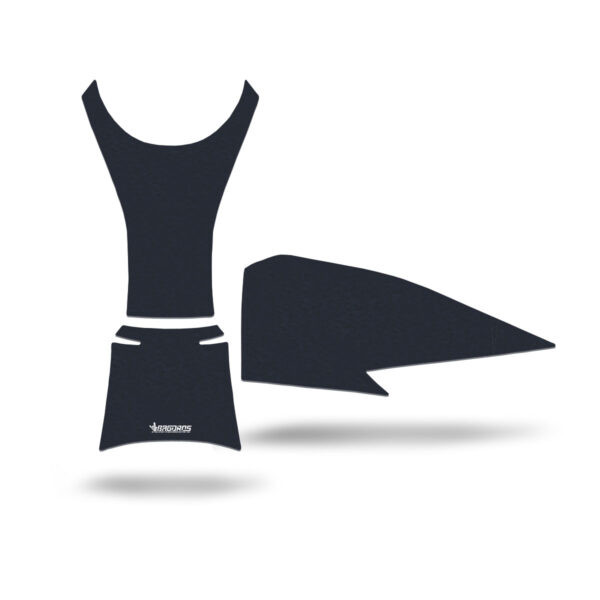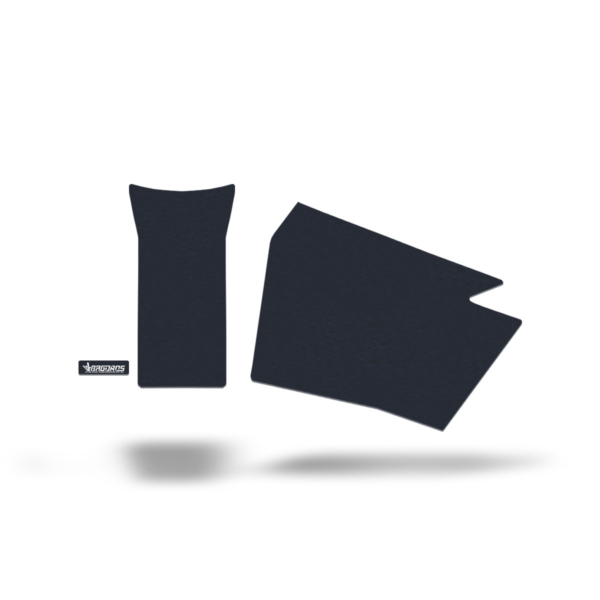A tank grip, often referred to as tank pads or tank traction pads, is a motorcycle accessory designed to provide better grip and control for the rider’s knees and thighs on the motorcycle’s fuel tank.
The main purpose of a tank grip is to enhance stability and control during various riding situations, such as cornering, braking, and acceleration. Tank grips are typically made of rubber, foam, or other grippy materials that adhere to the motorcycle’s fuel tank. They come in various shapes and sizes, and they’re designed to be attached to specific areas of the tank where the rider’s legs and knees would make contact. These pads create a textured surface that helps prevent the rider from sliding around on the tank, especially during aggressive or spirited riding.
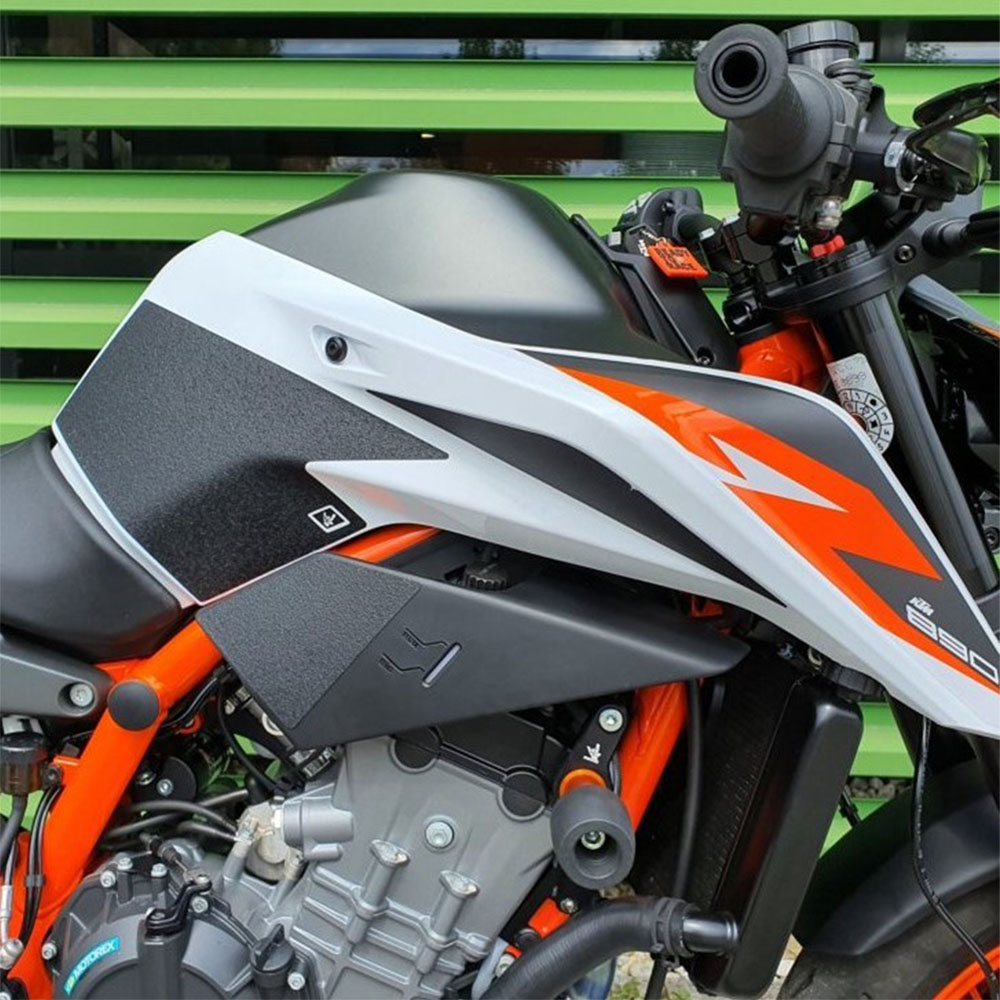
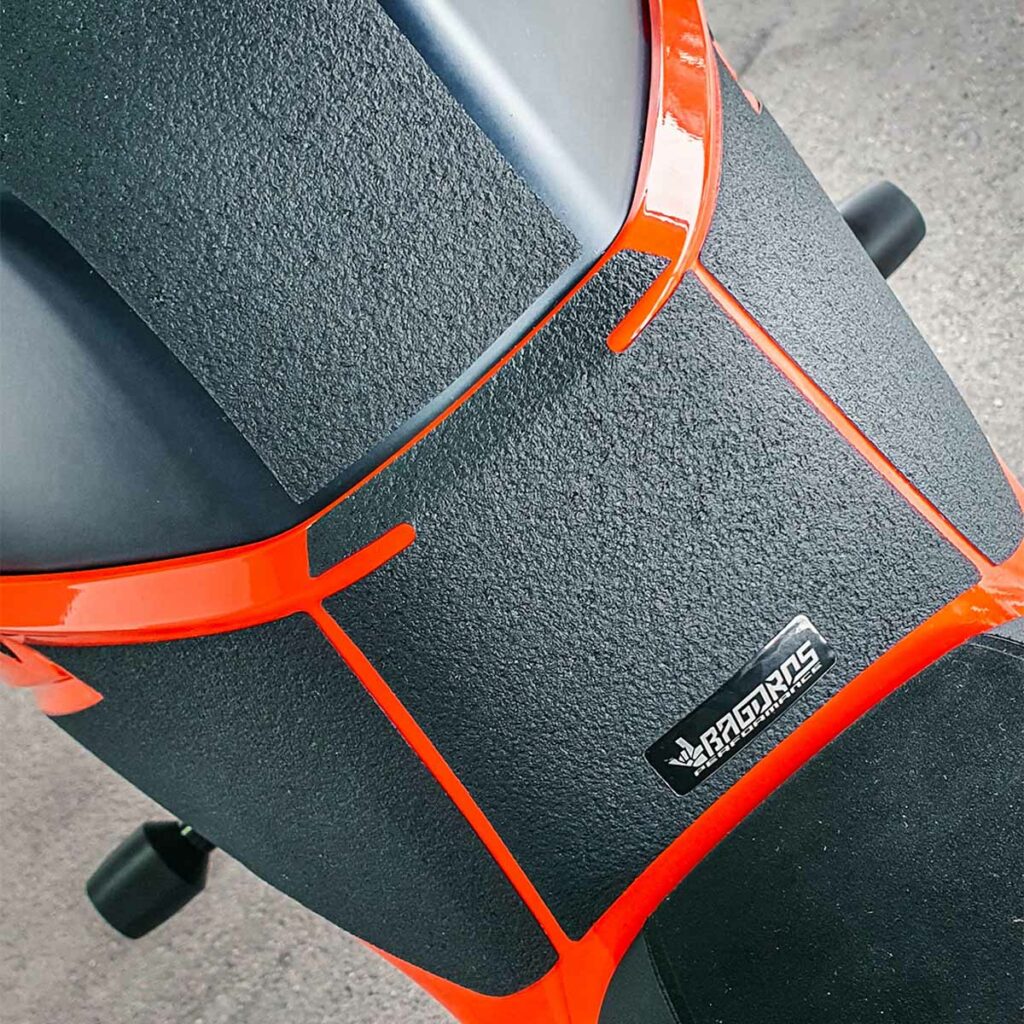
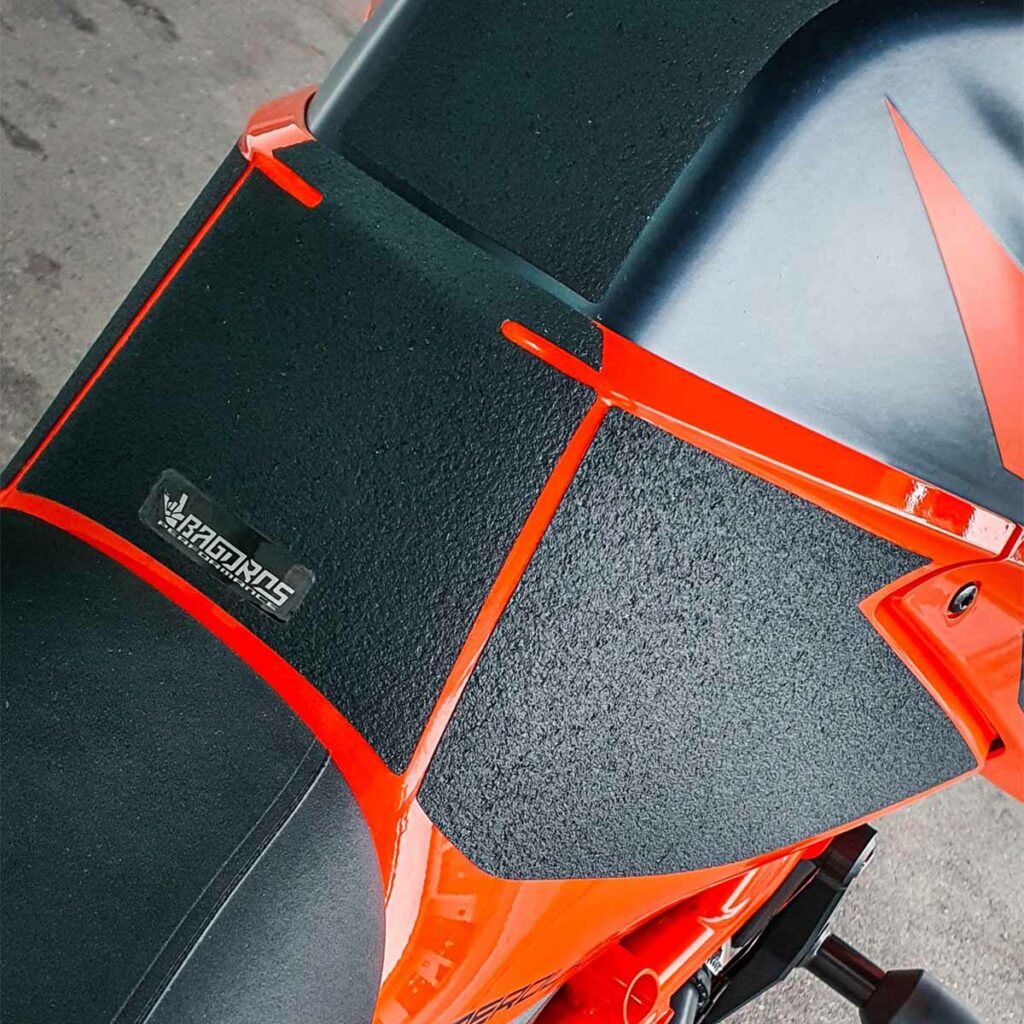
Key benefits of using tank grips include:
- Enhanced Control: Tank grips allow the rider to maintain a firmer and more stable connection with the motorcycle, enhancing control during maneuvers and reducing the risk of sliding off the seat.
- Reduced Fatigue: With improved grip on the tank, riders can use their legs to support their body weight, reducing the strain on their arms and wrists during long rides.
- Confidence: The added grip provided by tank grips can boost a rider’s confidence, allowing them to focus more on riding techniques and less on maintaining their position on the bike.
- Improved Body Positioning: Tank grips can help riders maintain the correct body positioning during turns and corners, contributing to better handling and cornering stability.
- Protecting the Tank: Tank grips can also offer some protection to the motorcycle’s fuel tank by creating a barrier against scratches and wear caused by the rider’s gear.
Installing tank grips is a common modification for sport and sport-touring motorcycles, where riders often engage in more dynamic riding. However, they can also be used on various types of motorcycles depending on the rider’s preferences and needs. It’s important to note that while tank grips offer benefits, they might not be suitable for all riders. Some riders prefer the freedom to shift their body position easily on the seat, which can be limited by the grip provided by these pads. If you’re considering adding tank grips to your motorcycle, it’s a good idea to try out different options and see what works best for your riding style and comfort.
Why use tank grips?
If you’ve ever observed someone riding a motorcycle on the track, you’ll notice their remarkable ability to cling to the bike with astonishing prowess. They lean their knees and elbows onto the track’s surface, occasionally even utilizing their shoulders, although once their helmet touches the ground, the spectacle concludes. Have you ever pondered over the secret to their tenacious grip on the bike? This mastery is a result of years of rigorous training, countless hours spent on the track, incredibly strong leg muscles, and a high-quality leather suit.
Integral to this equation are the tank grips. The leather firmly engages with the tank grips, establishing an unyielding connection. These grips are ingeniously designed to embed themselves into the leather, guaranteeing the legs never lose their hold.


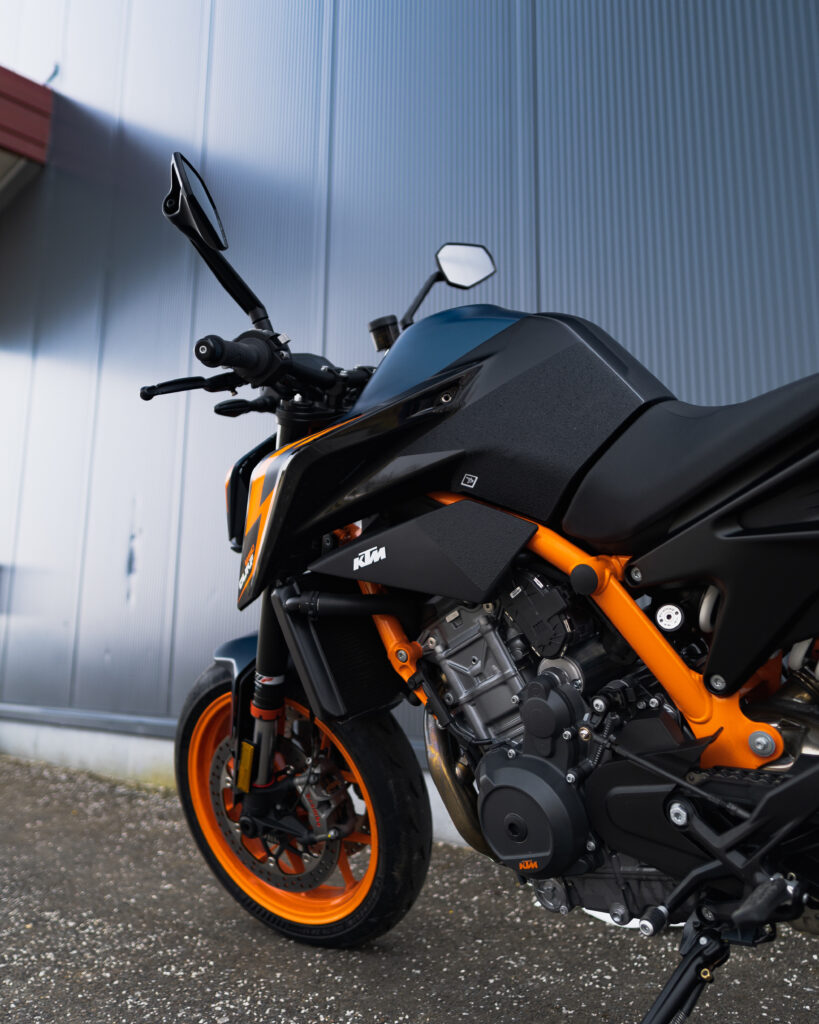
Consequently, this implies that you needn’t rely as heavily on gripping the bike with your arms or legs. This leads to reduced fatigue and instability when dismounting at the end of a session. I vividly recall the conclusion of my inaugural track session; my body was quivering noticeably as I stepped off the bike. Thankfully, the side stands were there to prevent me from dropping the bike!
What are Tank Pads for?
Motorcycle tank grips are occasionally mentioned alongside tank pads. Some products even use these terms interchangeably or group them under the general label of ‘tank protector,’ according to Motorcycle News. Nevertheless, despite sharing certain similarities, these terms are not synonymous.
Usually, a motorcycle tank pad specifically covers the upper section of the fuel tank, roughly encompassing the filler cap area. Its primary function is to safeguard the tank’s paint from potential scratches caused by items like belts, zippers, and helmets when the rider leans over, as elucidated by Cycle World. Similar to aftermarket mirrors, tank pads also contribute to the bike’s visual appeal.
Are Tank Grips removable?
Bagoros Performance tank grips have been engineered for permanent installation, and if you intend to remove them, it’s crucial to be mindful of a significant factor – prolonged sun exposure may have caused fading on the surface around the grip more than underneath it. While the likelihood of any tank grip removal causing lasting harm to your bike’s paintwork is low, it’s important to recognize that if the initial quality of the paintwork is subpar, you’re dealing with an older model, or the bike has undergone repainting or touch-ups, these factors could impact the removal process.
Additionally, it’s essential to note that while most original equipment manufacturer (OEM) graphics and logos typically feature an overlaminated or lacquered protective finish, it’s recommended to confirm this before attempting to remove the tank grips.
The complexity of removing tank grips varies based on the grip’s size, shape, and age. In cases where removal is necessary, the following steps are advised:
- Clean with Soapy Water: Prior to removal, ensure you clean the grip and its vicinity with soapy water to prevent potential scratching of your bike’s paint. Use a cloth or sponge for this task.
- Apply Heat: To weaken and loosen the adhesive, heat the grip. A hairdryer is ideal for this purpose, as a heat gun’s power could damage the paint. Heat the grip evenly, focusing on the edges, for approximately two minutes.
- Peel It Off: Immediate action after heating is key. Keep a plastic card on hand, such as an old debit or credit card, to avoid paint damage. Slide the card around the edges of the grip to release it from the bike’s surface. Afterward, peel off the grip by hand. In stubborn cases, dental floss can be employed, gently sawing between the grip and tank.
- Adhesive Removal: Once the tank grip is off, adhesive residue might remain on the tank. This is normal and can be addressed without harming the paint. You can use white distilled vinegar on a cloth or opt for adhesive removers like Goo Gone or WD-40. Follow the product instructions to effectively remove the residue.
These steps should guide you through the process of removing tank grips with care and precision, safeguarding your bike’s paintwork in the process.
Don’t forget to follow us on our social media channels at Facebook & Instagram








